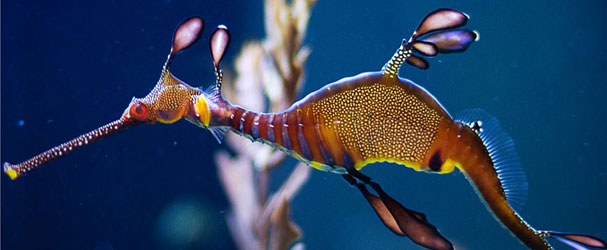
By:
- Shannon Casey
Published Date
By:
- Shannon Casey
Share This:
Scripps Oceanography Receives nearly $5.5 Million in Recent Gifts
Scripps Institution of Oceanography at UC San Diego received a string of major private donations in early 2012 that exceeded $5.2 million.
- $3.5 million from the David Delacour estate
- $1 million from the W.M. Keck Foundation
- $680,000 from the Waitt Foundation
- $300,000 from the Lowe Family Foundation
The gifts will help ensure the future excellence of the institution for many years ahead:
$3.5 Million from David DeLaCour Leaves a Lasting Legacy for Scripps
A $3.5 million planned gift from the estate of the late David DeLaCour is one of the largest ever received by Scripps. Scripps and Birch Aquarium at Scripps will each receive $1.75 million and will use the unrestricted funds for priority projects and emerging opportunities.
David DeLaCour’s relationship with Scripps began in 1997 when he phoned the Scripps Development Office and expressed an interest in preserving the ocean and its inhabitants, in part because of his love of fishing. Next he visited the Scripps campus and Birch Aquarium at Scripps where he learned more about the institution’s breadth. DelaCour was enthralled with the array of scientific research he saw and informed the Scripps Development Office of his intentions to include charitable gifts to Scripps Oceanography and Birch Aquarium in his will.
In the years since that first 1997 visit, DeLaCour visited the Scripps campus every summer, fished with Scripps development officer John Steinitz, met with development officer Lawrance Bailey to get updates about Scripps, and toured Birch Aquarium. Steinitz also took DeLaCour shark tagging with Scripps scientists and to visit Scripps research projects in the Gulf of California.
DeLaCour’s gift to Scripps was realized after he passed away on November 21, 2010.
$1 Million Grant from W.M. Keck Foundation Funds Research to Create the World’s First Multi-resolution, 3-D, Underwater Video Microscope
Thanks to a $1 million gift from the W.M. Keck Foundation, Scripps research oceanographer Jules Jaffe, Scripps professor of biological oceanography Peter Franks, and UC San Diego professor of computer science and engineering David Kriegman will build the world’s first multi-resolution, 3-D, in situ, underwater video microscope to peer at tiny marine nanoplankton.
The microscope will help discriminate between different species of plankton that are important in global carbon cycling. Image analysis of data from the high-resolution microscope will allow scientists to see, for the first time, the most abundant organisms on the planet in their native habitat and how they interact with each other.
“I am enthralled with inventing observational technology that permits me to make discoveries about the natural world,” said Jaffe. “This device will be so far beyond anything that anyone has right now, that I must imagine that a host of such discoveries lie just around the corner.”
$680,000 from Waitt Foundation for Fish Pollution Study
A recent $680,000 grant from the Waitt Foundation to Scripps Oceanography will advance understanding of emerging pollution risks to oceans and human health from seafood contamination. The work, led by Scripps marine biologists Amro Hamdoun and Stuart Sandin, also will raise public awareness of the ocean’s pollution problems and inspire solutions.

“We have put many thousands of new industrial chemicals into the oceans over the past 50 years,” said Hamdoun. “We need to know more about which ones are accumulating in the fish we eat so that we can develop strategies to make less persistent industrial compounds. This project is the first step in understanding the types of chemicals that accumulate.”
To help understand the threat and suggest solutions, Hamdoun and Sandin will estimate levels and distributions of modern industrial chemicals in the global seafood supply of yellowfin tuna (Thunnus albacares). Yellowfin tuna is among the most important fisheries targets worldwide, supporting fishing activities globally in tropical and subtropical seas.
$300,000 from the Lowe Family Foundation Launches Seadragon Breeding Program at Scripps
With the support of a $300,000 grant from the Lowe Family Foundation, Scripps professor Greg Rouse will launch a seadragon breeding pilot program at Scripps Oceanography in collaboration with breeding partner Birch Aquarium at Scripps.
“We are very grateful to Mary Lowe and the Lowe Family Foundation for recognizing the value in understanding more about the life cycle of these amazing animals,” said Rouse, whose previous research has led to some enlightening findings on the genetics of seadragons.
“All seadragons on public display throughout the world are derived from wild caught males that were brooding offspring,” said Rouse. “No one has closed the life cycle and bred seadragons in captivity to then supply other aquaria. If this can be done the wild harvest of seadragons in Australia can cease.”
To improve the chances of successful captive breeding programs, Rouse will work to develop methods to identify the sex of juvenile or non-reproductive adults, and understand how closely related individuals are to each other. Answering scientific questions such as this, combined with detailed investigation on the behavior and reproductive biology of seadragons, is critical for a successful captive-breeding program. This knowledge also will be vital for new and ongoing conservation efforts.
Rouse’s efforts align with Birch Aquarium’s successful Seahorse Propagation Program, which celebrates its 17th year this month.
This story was originally published in Explorations Now magazine
Share This:
You May Also Like
Stay in the Know
Keep up with all the latest from UC San Diego. Subscribe to the newsletter today.


